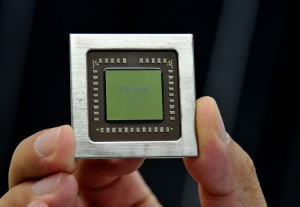Via Extreme Tech
-----
According to reports from various industry
sources, the Chinese government has begun the process of picking a
national computer chip instruction set architecture (ISA). This ISA
would have to be used for any projects backed with government money —
which, in a communist country such as China, is a fairly long list of
public and private enterprises and institutions, including China Mobile,
the largest wireless carrier in the world. The primary reason for this
move is to lessen China’s reliance on western intellectual property.
There are at least five existing ISAs on the table for consideration — MIPS, Alpha, ARM, Power, and the homegrown UPU
— but the Chinese leadership has also mooted the idea of defining an
entirely new architecture. The first meeting to decide on a nationwide
ISA, attended by government officials and representatives from academic
groups and companies such as Huawei and ZTE, was held in March.
According to MIPS vice president Robert Bismuth, a final decision will be made in “a matter of months.”

China
has a long history with MIPS and Alpha. Loongson processors, which
power millions of Chinese school computers, use MIPS — and the ShenWei
processors (pictured right) found in China’s first homegrown
supercomputer, the Sunway Bluelight MPP,
are based on the Alpha ISA. MIPS Technologies (the company) hasn’t been
doing very well recently, and it’s rumored that the Sunnyvale-based
company could be up for sale — a purchase I’m sure the Chinese
government could afford.
According to EE Times, there are some 34
ARM licensees in China, but at $5 million for a single Cortex-A9 core
license, it’s unlikely that ARM will be China’s choice. The Power ISA is
cheaper, but lacks the software ecosystems that ARM and MIPS enjoy.
ShenWei/Alpha is also a possibility, but again it cannot compete with
MIPS’ installed base.
The other option, of course, is developing a
brand new ISA — a daunting task, considering you have to create an
entire software (compiler, developer, apps) and hardware (CPU, chipset,
motherboard) ecosystem from scratch. But, there are benefits to building
your own CPU architecture. China, for example, could design an ISA (or
microarchicture) with silicon-level monitoring and censorship — and, of
course, a ubiquitous, always-open backdoor that can be used by Chinese
intelligence agencies. The Great Firewall of China is fairly easy to
circumvent — but what if China built a DNS and IP address blacklist into
the hardware itself?
Taking a leaf out of South Korea’s hardcore
gaming scene, what if the Chinese government decided to implement a
hardware-level 10pm curfew for video games? Or some code that
automatically turns negative mentions of Hu Jintao (the Chinese
president) into positives, and inserts a few honorifics at the same
time. Or a latent botnet of hundreds of millions of computers that can
be activated upon the commencement of World War III. Or, or, or…

